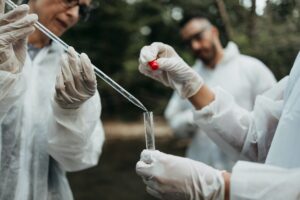Table of Contents
What is R&D Stability Testing?
R&D Stability Testing is a process used to determine the shelf life and stability of a product. It involves testing the product under various conditions to ensure that it remains safe and effective for use over a specified period.
Why is R&D Stability Testing important?
R&D Stability Testing is important because it ensures that products are safe and effective for use over a specified period. It also helps to identify any potential issues with the product, such as degradation or changes in potency, which can be addressed before the product is released to the market.
What are the different types of R&D Stability Testing?
There are several types of R&D Stability Testing, including accelerated stability testing, real-time stability testing, and intermediate stability testing. Accelerated stability testing involves subjecting the product to extreme conditions, such as high temperatures and humidity, to simulate the effects of long-term storage. Real-time stability testing involves storing the product under normal conditions and monitoring its stability over time. Intermediate stability testing involves testing the product at various intervals between accelerated and real-time testing.
What factors are considered during R&D Stability Testing?
Several factors are considered during R&D Stability Testing, including temperature, humidity, light exposure, and pH levels. These factors can affect the stability and shelf life of the product, and testing them helps to ensure that the product remains safe and effective for use over a specified period.
How is R&D Stability Testing conducted?
R&D Stability Testing is conducted using specialized equipment and protocols. Samples of the product are stored under various conditions, and regular testing is conducted to monitor their stability and potency. The results of the testing are then analyzed to determine the shelf life and stability of the product.
What are the benefits of R&D Stability Testing?
The benefits of R&D Stability Testing include ensuring the safety and effectiveness of products, identifying potential issues before they become a problem, and improving the overall quality of products. It also helps to ensure compliance with regulatory requirements and can help to build consumer trust in the product and brand.
Who conducts R&D Stability Testing?
R&D Stability Testing is typically conducted by research and development teams within the company or by third-party testing facilities. These teams have the expertise and equipment necessary to conduct the testing and analyze the results to ensure the safety and effectiveness of the product.






